Migration is a term that scientists use to describe the large-scale movements of animals from one habitat to another. There are dozens of examples of migration in the animal kingdom, and it is a common behavior of many different species, including birds, mammals and insects. Migration has even played a big role in the history of humans.
We’ll talk about migration below, including some of the reasons that animals move from one place to another. We’ll also provide a few examples of animals that engage in particularly interesting migratory patterns.
Why Do Animals Migrate?
Animals migrate for a variety of reasons, but most do so to obtain resources.
Animals don’t decide to pick up and move for no reason. Instead, they do so to acquire resources. Simply put, animals move because they need things that can’t be attained in their current location.
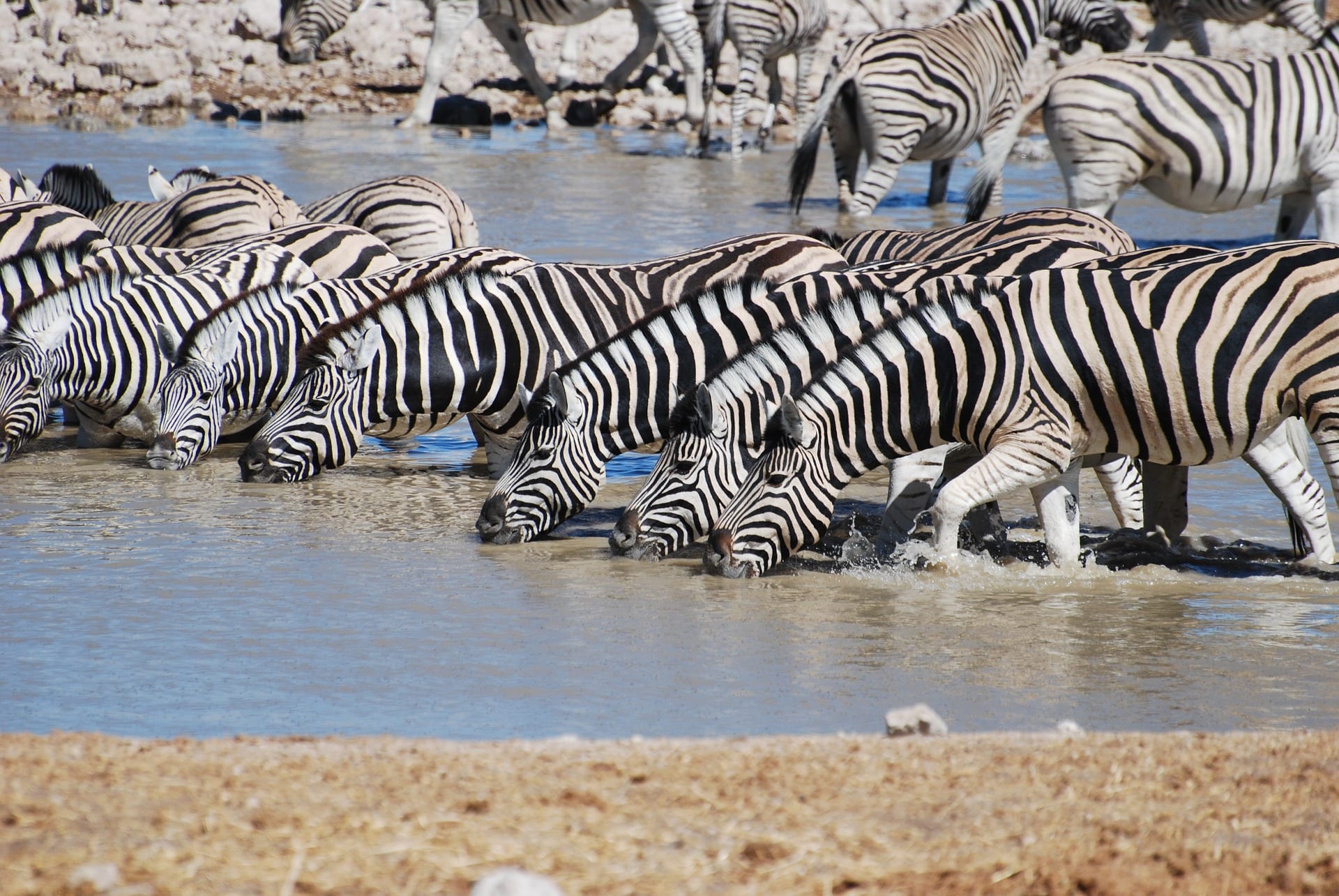
However, the resources they require vary wildly. Many animals migrate to find water, while others move in search of food. Some migrate to avoid excessively high or low temperatures, while others do so to raise their young in safe and food-rich areas.
Many times, animals will have several reasons to move from one place to the next. For example, some animals may move to find water when their current home is experiencing a drought. But once they reach areas with plentiful rainfall, they will usually find food is plentiful in these areas too.
The Most Familiar Example of Migration: Birds Flying South for the Winter
Many birds fly south in the winter to find food and escape cold temperatures.
One of the first examples of migration that many people learn about occurs in birds. Many birds fly south as winter approaches. They return to their northern homes once warm weather returns. In fact, you can probably observe your local birds migrating if you remain observant during the fall and spring.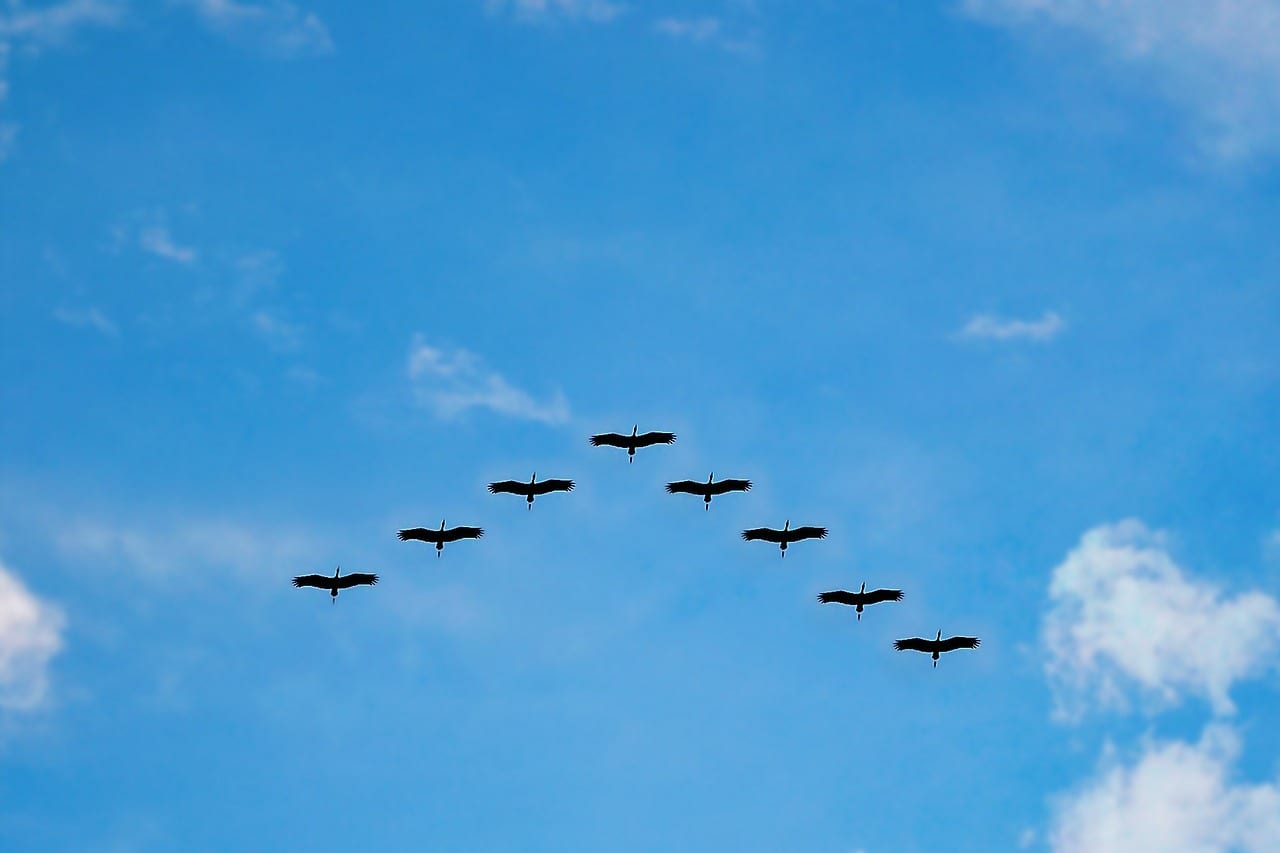
Birds migrate for a number of reasons, but they primarily do so to avoid harsh winter weather. But winter not only causes the temperatures to drop, but it also makes food and water harder to find. But once they travel south, birds are not only able to enjoy warm weather, but plentiful food and water too.
Note that not all birds migrate for the winter. Some are able to remain in their homeland and find enough food and water to survive. It is also important to note that not all birds head south when migrating. In fact, only birds in the northern hemisphere fly south. Those birds living in the southern hemisphere actually fly north during their winter (which occurs during the northern hemisphere’s summer).
Mammalian Migration
Most mammals are unable to fly, but that doesn’t mean they can’t migrate.
Birds may be the most famous migrators, but plenty of other animals migrate too. The deer, elk and moose living near most North American and European readers don’t often migrate, but others – especially the large herbivores of Africa – often migrate great distances.
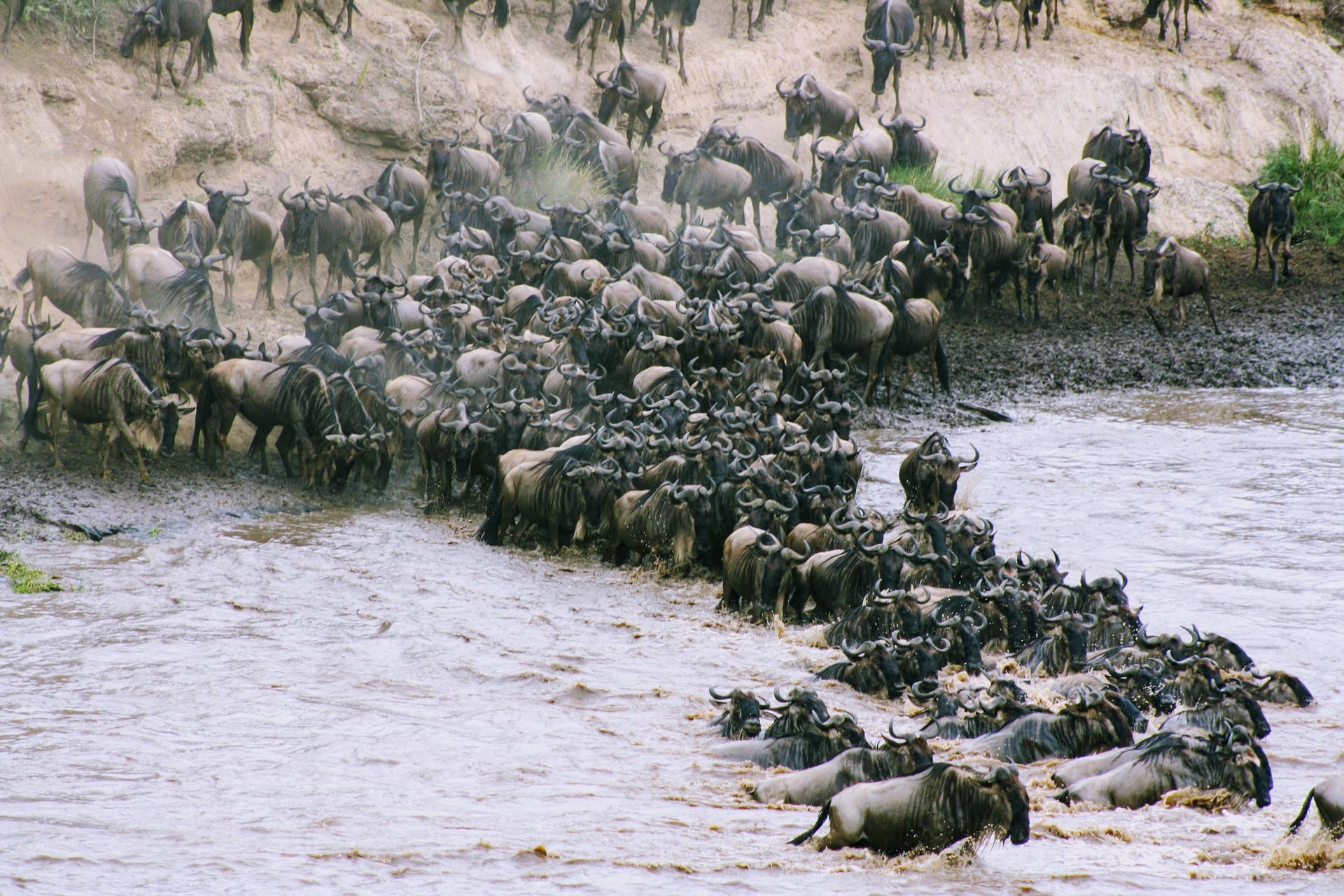
In fact, zebras, wildebeests and a few other hooved animals engage in a yearly trek called the “Great Migration.” This 1,200-mile journey often includes nearly 2 million animals. During the trip, the animals will move from Tanzania to Kenya and back.
The animals who set off on this annual journey do so to chase the rains. Rainfall not only ensures that these animals will have enough to drink, but it also means that they’ll be able to find enough to eat too.
Daily Migration: Not All Migration Involves Long Distances
Some animals migrate as part of their daily activity patterns.
Not all migrations take weeks or months to complete. Some migratory trips only take a few short hours to unfold. These types of short-term or daily migrations can occur in many different animal species, but some of the best examples take place in the ocean.

For example, zooplankton – tiny microorganisms that live in the ocean – migrate each day. At night, these creatures travel up to the surface of the water to feed. But once the sun rises, the organisms begin sinking into deep water to avoid predators.
Interestingly, many of these animals seem to be “hard-wired” to migrate in this manner. We know this because scientists have raised some of these animals in completely black aquariums. But even though they couldn’t tell when it was day or night, the organisms still migrated up each night and down the following morning.
The Longest Migration on Earth
Many animals engage in lengthy migrations, but none travel as far as the arctic tern does.
The arctic tern is a medium-sized bird that primarily feeds on fish and crustaceans. You wouldn’t think they were very special by looking at them – they basically resemble seagulls.
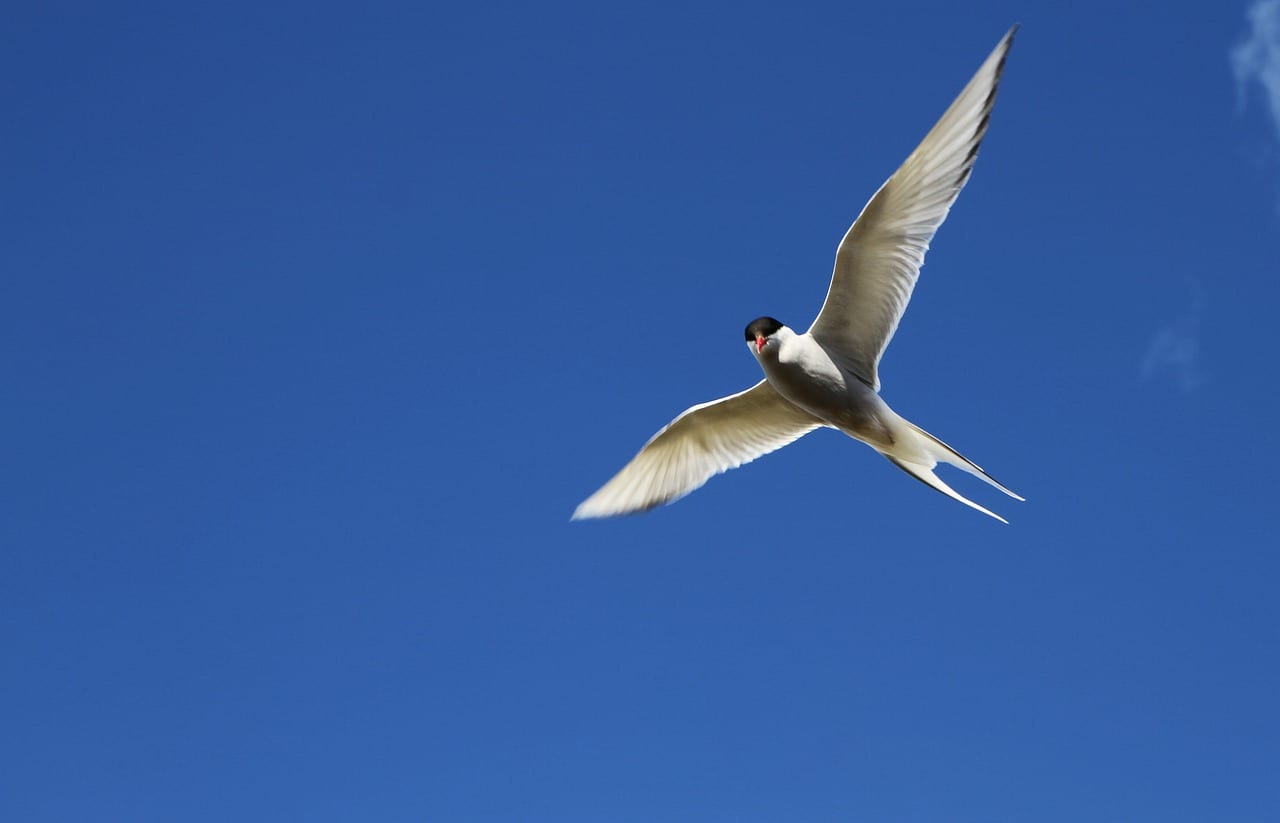
However, arctic terns engage in a nearly constant migration pattern, which starts over as soon as it ends. Over the course of the year, arctic terns will end up traveling between 40,000 and 50,000 miles. That’s like circling the entire planet twice! In fact, because of the way these birds travel, they actually enjoy two summers every year.
Obviously, arctic terns must be strong fliers to complete such a long journey. But they not only fly during these long trips, but they also try to save energy by gliding whenever possible. Fortunately, these birds feed on fish. This means that it is easy for them to catch prey during their journey.

Migration is an important part of the lives of many wild animals. It helps them avoid inhospitable weather and find enough food and water to survive. Some even do so to reach places in which they can raise their offspring.
What do you think would happen if some of these animals were unable to migrate? Do you think that people cause any problems for migrating animals? What are some of the ways that human activity could interrupt the migration patterns of these animals?
Let us know in the comments below.



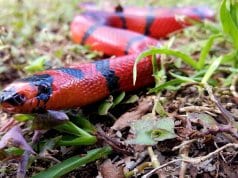
![Red Angus Closeup of a beautiful Red Angus cowPhoto by: U.S. Department of Agriculture [pubic domain]https://creativecommons.org/licenses/by/2.0/](https://animals.net/wp-content/uploads/2020/03/Red-Angus-4-100x75.jpg)

